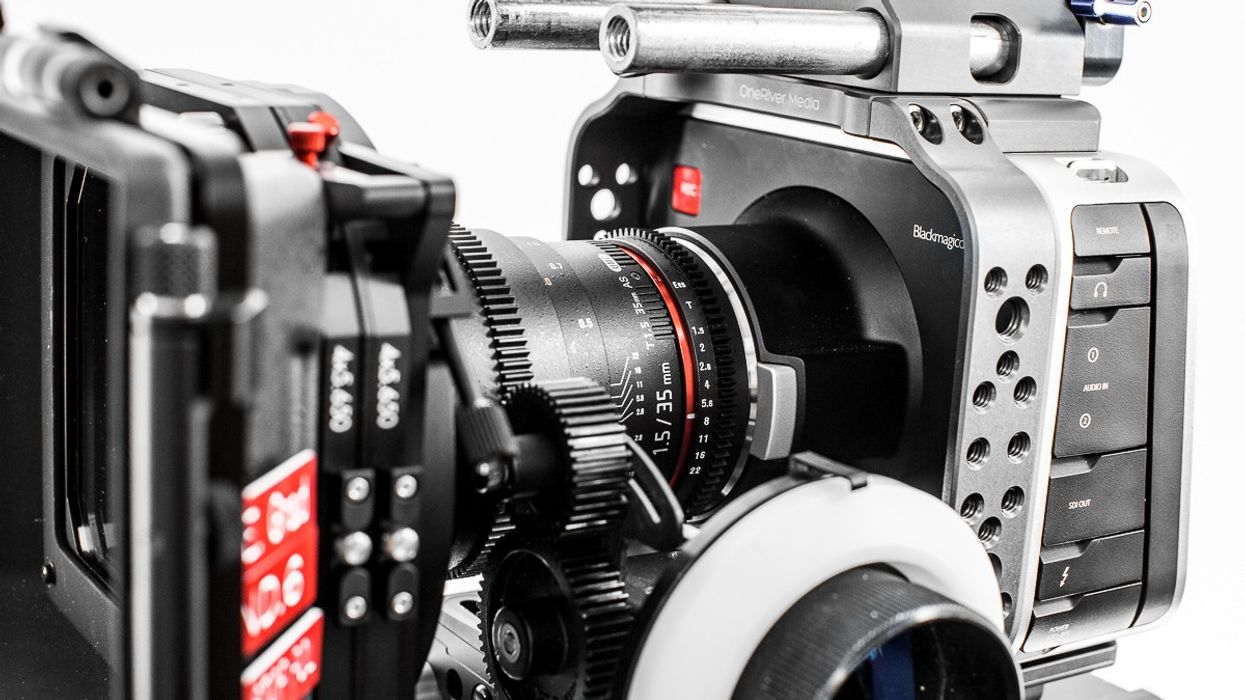Lenses Face Off on the Blackmagic Cinema Camera: Samyang/Rokinon 35mm vs. Canon 35mm

While you might not have your Blackmagic Cinema Camera yet, there are still a few who not only have them, but have been extensively testing various parts of their workflow. Marco Solorio has had numerous excellent tests with both the camera itself and some of the lens options, and now we've got a very thorough test with one of Canon's better lenses, the 35mm f/1.4 L series lens, and the Samyang/Rokinon 35mm T/1.5 Cine lens (Samyang and Rokinon are just brand names, but the lenses are identical). While they're both full-frame DSLR lenses at heart, how do they stack up when paired with the BMCC? Click through to find out.
Since the Canon 35mm cannot be electronically controlled from the Cinema Camera yet, Marco decided to look at another lens that didn't suffer from that issue. I've compiled a few of his test shots below and some of my thoughts on them, but you should head on over to the OneRiver Media blog for the rest of the photos and Marco's verdict on the lenses. You should also keep in mind that since the Blackmagic Cinema Camera is a 2.3x crop, these lenses are similar to an 80mm lens on a full-frame camera, which means that these normally wide angle lenses are actually telephoto on the BMCC. The Samyang is a cine-style lens, and besides having a declicked aperture and geared focus/iris, it is also measured in T-stops, which is the actual transmission of light as opposed to the Canon's f-stops, which is only a ratio relating to the opening of the diaphragm.
Here are a few of the comparison photos, with the Samyang/Rokinon 35mm T/1.4 first, followed by the Canon 35mm f/1.4 (click for a larger view):
What's clear from the first two photos is that the Samyang is actually a bit longer than the Canon lens. Marco mentions this in the review, and while the difference isn't extreme, it's just something to keep in mind as focal lengths can vary slightly manufacturer to manufacturer. Both lenses were shot at the widest aperture possible, and while the Samyang looks great, the Canon lens is a bit sharper. My experience with these Canon lenses is that they usually feel a bit clinical for my taste. I normally use older manual Nikon lenses for this reason, as they tend to produce a flatter and less contrasty look which can actually be helpful for video depending on what you're shooting. Bokeh looks to be somewhat similar, with some slight halos around the points of light in the Canon lens.
Here is an outdoor shot that not only shows off both lenses at 5.6, but also gives you another great example of the impressive dynamic range of the BMCC (Samyang on top):
I'm kind of crazy about sharpness, but I actually prefer the look that the Samyang is putting out over the Canon. This is purely personal preference, since the Canon lens is actually a better lens overall in terms of sharpness, build quality, etc. The somewhat warmer tone of the Samyang lens is also something I prefer in my own work, but I know many like to keep things as neutral as possible before going into color grading. The sharp and neutral look is very similar to what I've seen from using Zeiss lenses in my own work, so if you're looking for the best of the best in image quality, the Canons and the Zeiss lenses will both be top of the line for the BMCC.
On the other hand, if you'd rather save a few bucks, the Samyangs have a number of advantages that make shooting video easier, and when it comes to actually shooting a movie, I would ideally rather not work with the Canon lenses since they must be controlled electronically and do not have hard stops built in to the iris (the ring just spins forever). Even though the Samyang lenses are plastic, having the lenses already geared makes for a more pleasant user experience. The other big thing about the Samyangs is that since they have a declicked aperture ring that can be controlled manually, they can be used on far more cameras as long as those cameras can accept a dumb mount. I personally would get the Nikon mount lens since it can be adapted to a few more cameras with simple adapters (and I'm more comfortable with the direction the iris turns), but with the Samyangs it actually doesn't matter since all that is required is a dumb mount.
At $550 for the Samyang and $1330 right now for the Canon, the price difference could buy you another lens, and if you're not planning on using autofocus (since the Samyang lenses are all manual), the Samyang 35mm T/1.5 could be a fantastic option for someone just starting to put together a lens package.
What do you guys think? Does anyone own either of these lenses, and if so, what do you think of them? After seeing this test, which lens do you prefer?
Links:

















